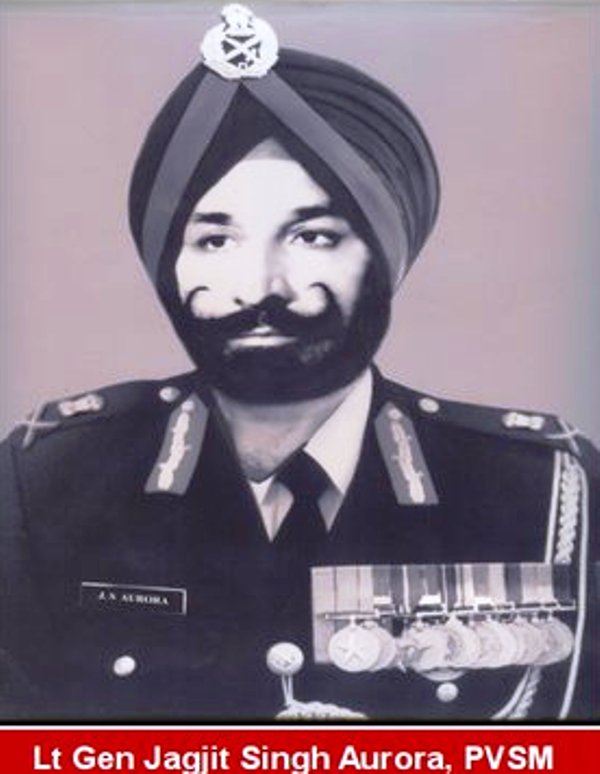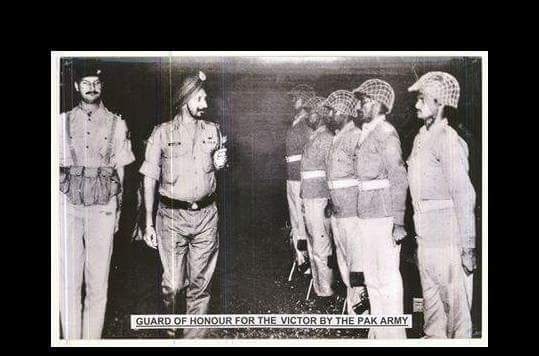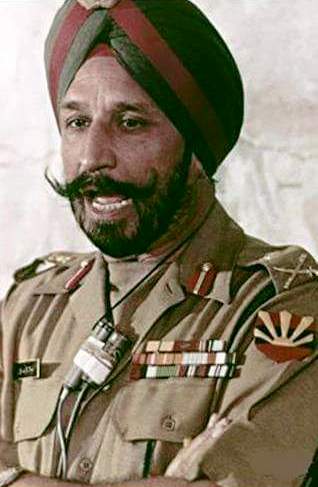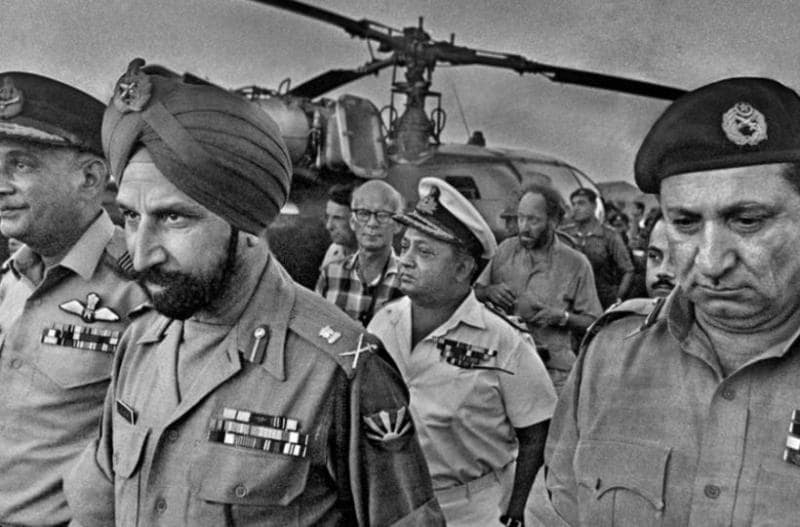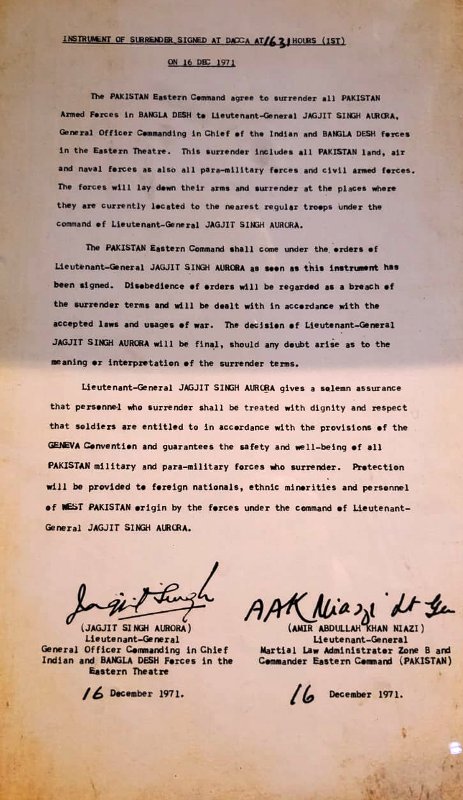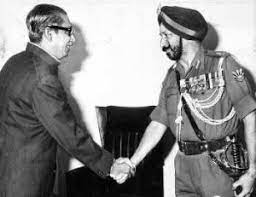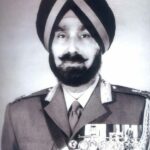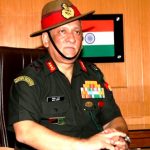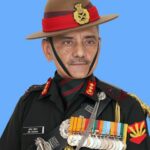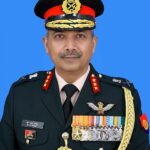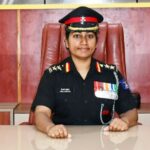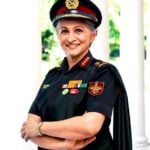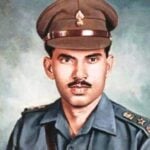Jagjit Singh Aurora Age, Death, Wife, Children, Family, Biography & More
| Bio/Wiki | |
|---|---|
| Other name | jagjit Singh Arora [1]Zee News |
| Profession(s) | Retired Indian Army officer and Politician |
| Famous for | Being the Indian Army's Eastern Army Commander during the 1971 Indo-Pakistan War |
| Physical Stats & More | |
| Height (approx.) | in centimeters- 182 cm in meters- 1.82 m in feet & inches- 6’ |
| Eye Colour | Dark Brown |
| Hair Colour | Grey |
| Military Service | |
| Service/Branch | Indian Army |
| Rank | Lieutenant General |
| Service Years | 1 January 1939 - 1973 |
| Unit | • 1st battalion of the 2nd Punjab Regiment (1939 - 1947) • 2nd Battalion of Punjab Regiment (1947 - 1973) |
| Service Number | IC 210 |
| Commands | Eastern Command |
| Career Ranks | British Indian Army • Second Lieutenant (1 February 1939) • Lieutenant (30 January 1940) • Captain (acting) (22 February 1940) • Captain (temporary) (5 February 1941) • Captain (war-substantive) (1 May 1942) • Captain (substantive) (30 January 1946) • Major (acting) (1 February 1942) • Major (temporary) (1 May 1942) Indian Army • Captain (15 August 1947) • Captain (after recommissioning and change of rank insignia) (26 January 1950) • Major (temporary) (26 February 1950) • Major (substantive) (30 January 1951) • Lieutenant-Colonel (30 January 1952) • Colonel (1 August 1958) • Brigadier (acting) (3 February 1957) • Brigadier (substantive) (1962) • Major General (acting) (21 February 1963) • Major General (substantive) (20 June 1964) • Lieutenant General (acting) (6 June 1966) • Lieutenant General (substantive) (4 August 1966) Note: Officers who served in the British Indian Army were given acting, temporary, and war-substantive ranks to fulfil the shortage of high-ranking officers during an emergency such as a war. |
| Designations (major ones) | • Brigadier General Staff (BGS) of 33 Corps (1961) • Director General of Military Training (DMT) (23 November 1964) • Deputy Chief of the Army Staff (DCOAS) (6 June 1966) |
| Awards, Honours, Achievements | • Param Vishisht Seva Medal (PVSM) by the President of India after the end of the 1971 war • Padma Bhushan, India’s third-highest civilian award (1972) • Bir Protik, Bangladesh’s fourth-highest gallantry award, by the Bangladesh government • Punjab Rattan Award by the Government of Punjab (after his death) |
| Politics | |
| Political Party | Akali Dal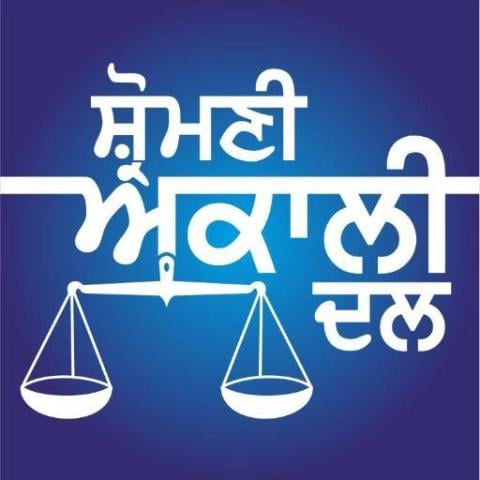 |
| Political Journey | Member of the Parliament (Rajya Sabha) (1986 - 1992) |
| Personal Life | |
| Date of Birth | 13 February 1916 (Sunday) |
| Birthplace | Kala Gujran, Jhelum district, Punjab Province, British India (now in Punjab, Pakistan) |
| Date of Death | 3 May 2005 |
| Place of Death | New Delhi |
| Age (at the time of death) | 89 Years |
| Death Cause | Natural causes [2]The Times of India |
| Zodiac sign | Aquarius |
| Signature | 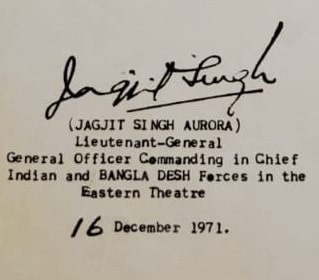 |
| Nationality | • British Indian (1916 - 1947) • Indian (1947 - 2005) |
| Hometown | Hargobindpura Basti, Sangrur, Punjab, India |
| School | Mission High School in Rawalpindi |
| Educational Qualification | After completing his schooling, JS Aurora joined the Indian Military Academy [3]The Tribune |
| Religion | Sikhism [4]India Times |
| Address | 529(A), Hargobindpura Basti, Sangrur, Punjab, India |
| Relationships & More | |
| Marital Status (at the time of death) | Married |
| Family | |
| Wife/Spouse | Bhagwant Kaur Aurora (deceased)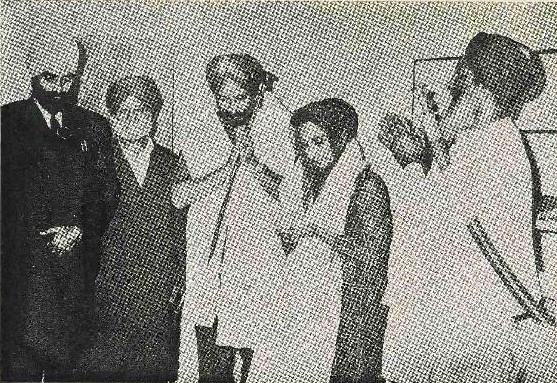 |
| Children | Son- Kiranjit Singh Rana (US-based publisher) [5]The Hindu’s photograph of Kiranjit Singh Rana Daughter- Anita Kalra 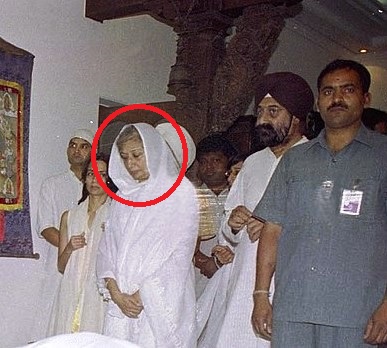 |
| Parents | Father- Dewan Singh (engineer) Mother- Name not known |
| Siblings | Sister- Sampooran Jeet (teacher) |
Some Lesser Known Facts About Jagjit Singh Aurora
- Jagjit Singh Aurora was a retired Lieutenant General of the Indian Army and a politician. He is known for commanding the Eastern Command of the Indian Army during the 1971 Indo-Pakistan War in which Pakistan Armed Forces surrendered with more than 93,000 troops to India. J. S. Aurora died in New Delhi on 3 May 2005 due to age-related causes.
- After completing his formal education, JS Aurora joined the Indian Military Academy, where he completed his training on 1 January 1939 after which he joined the British Indian Army’s 1st battalion of the 2nd Punjab Regiment.
- In 1939, Japan declared war on Britain as a result of which Britain began mobilising troops to Burma (now Myanmar) to fight a war with the Imperial Japanese Forces. In the same year, JS Aurora, along with his unit, was deployed in Burma, where he fought during the Second World War.
- After the Second World War ended in 1945, JS Aurora continued to serve in the British Indian Army.
- On 15 August 1947, after the partition of India and Pakistan, JS Aurora decided to continue serving in the Indian Army. After the partition, he was assigned to the 2nd Battalion of the Punjab Regiment.
- On 22 October 1947, after Pakistan-backed tribal Lashkars began the invasion of the erstwhile state of Jammu and Kashmir, India too mobilised its armed forces against them. During the war, JS Aurora commanded his battalion, 2nd Punjab, and fought against the invading forces which included tribal Lashkars and the Pakistani military.
- On 28 November 1959, JS Aurora became a Brigadier (acting) following which he was given an infantry brigade to command.
- In 1961, JS Aurora was posted to the 33 Corps as Brigadier General Staff (BGS). As BGS, he led a team to Bhutan, where he established the Indian Army’s Indian Military Training Team (IMTRAT). The IMTRAT aimed to establish closer military ties with Bhutan.
- JS Aurora commanded an infantry brigade in North-East Frontier Agency (NEFA) when the war between India and China broke out in 1962.
- On 21 February 1963, following a promotion to the rank of Major General, JS Aurora was posted as an Infantry Division’s Commander.
- On 23 November 1963, JS Aurora became the Director General of Military Training (DMT).
- JS Aurora commanded another Infantry Division during the 1965 Indo-Pakistan War.
- On 6 June 1966, after becoming a Lieutenant General, JS Aurora was posted to Delhi as the Deputy Chief of the Army Staff (DCOAS).
- In 1967, during the border clashes with the Chinese People’s Liberation Army (PLA) at Nathu La and Cho La in Sikkim, JS Aurora was posted to the North-East Frontier Agency (NEFA) as a Corps Commander. During the skirmish, the Indian Army inflicted heavy casualties on the PLA, resulting in the PLA’s withdrawal.
- Jagjit Singh Aurora was posted to Kolkata, where he assumed the command of the Indian Army’s Eastern Command on 8 June 1969. As the General Officer-in-Command (GOC-in-C), he was given the responsibility of preparing the Indian troops for a war with Pakistan. He also ensured that 30,000 tons of arms, ammunition, rations, and other provisions reached the Eastern front without getting detected by the Pakistani troops stationed in East Pakistan (now Bangladesh). During an interview, JS Aurora talked about it and said,
As far as I remember, we started deploying our forces in large numbers from June 1971. We started moving our military administrative staff too because our depots were not well equipped to fight Pakistani troops on the eastern border. Whatever depots we had were set up during World War II. We also deployed more troops on the Assam and Tripura borders. Because we did not want to be caught with our trousers down if we were attacked on that front by Pakistani forces.”
JS Aurora also looked after the training of the Bangladeshi guerilla force Mukti Bahinis. The war between India and Pakistan broke out after Pakistani aircrafts bombed the Indian Air Force’s runways in India on 3 December 1971. To quickly defeat the Pakistani forces in East Pakistan, JS Aurora devised a plan according to which the Indian troops targeted and captured areas that were weakly defended while bypassing the heavily defended areas. JS Aurora’s plan resulted in the complete defeat of the Pakistani forces, which surrendered to the Indian Army in just 13 days of the start of the war. Lieutenant General AAK Niazi surrendered to Lieutenant General Jagjit Singh Aurora on 16 December 1971 after he signed the instrument of surrender at the Ramna Race Course in Dhaka at 16.31 IST. With the signing of the surrender documents, more than 93,000 Pakistani soldiers laid down their arms and were taken to India as Prisoners of War (POWs). The surrender at Dhaka became the largest surrender of any country since the end of the Second World War. [6]The Print
- According to Lt Gen JFR Jacob, during the 1971 war, JS Aurora often visited the troops at the frontline. He, however, did not share a cordial relationship with the field commanders. In his book, Surrender at Dacca: Birth of a Nation, JFR Jacob wrote,
During the 1971 operations, Aurora undertook frequent visits to the forward areas but failed to win the confidence of most of the field commanders there. His relations with most of them were like oil and water and he did not build up his subordinate commanders in spite of their successes in battle.”
- After the end of the war, JS Aurora continued to serve as the Eastern Army Commander till 1973 after which he retired.
- According to JFR Jacob, when JS Aurora was serving as the GOC of Eastern Command, he used to come to the office at 10 AM instead of 7.30 AM, which was the office timing.
- Soon after taking retirement from the Indian Army, JS Aurora joined the Akali Dal, and he served as a Member of the Rajya Sabha from 1986 to 1992.
- JS Aurora criticised the decision of Indira Gandhi to allow the Indian Army to attack the Golden Temple in 1984. During an interview, while talking about it, he said,
I don’t see a very comfortable period in the coming months in the Punjab. She is a very capable person, and she has great staying power. But she has no warmth. She can be a vicious, cold, calculating person.”
- To help the victims of the 1984 riots get justice, JS Aurora founded the Sikh Forum. He was also a member of the Citizen’s Justice Committee.
- JS Aurora authored a book titled The Punjab Story in 1984. The book discussed Operation Bluestar, which was the codename of the operation undertaken by the Indian Army at the Golden temple.
- On 3 May 2005, JS Aurora took his last breath in New Delhi. After his death, he was cremated with military honours at Brar Square in New Delhi. [7]The Times of India Talking about JS Aurora’s death, Bangladeshi Foreign Minister Morshed Khan said,
Aurora will be remembered in the history of Bangladesh for his contribution during our war of liberation in 1971, when he led the allied forces.”
After JS Aurora’s death, his uniform and medals were handed over by his family to the Indian Army.
- While paying homage to JS Aurora, Field Marshal Sam Manekshaw said that the credit for the victory of the Indian forces in Bangladesh should be given to JS Aurora as he planned the operations during the 1971 war. Talking about it, he said,
Jaggi did the work while I got the baton of the Field Marshal.”
- JS Aurora loved playing golf.
References/Sources:

